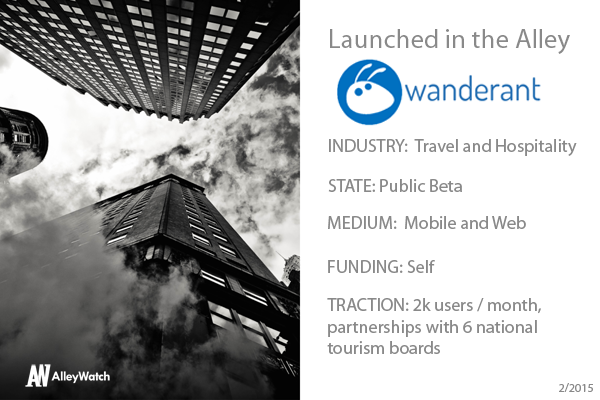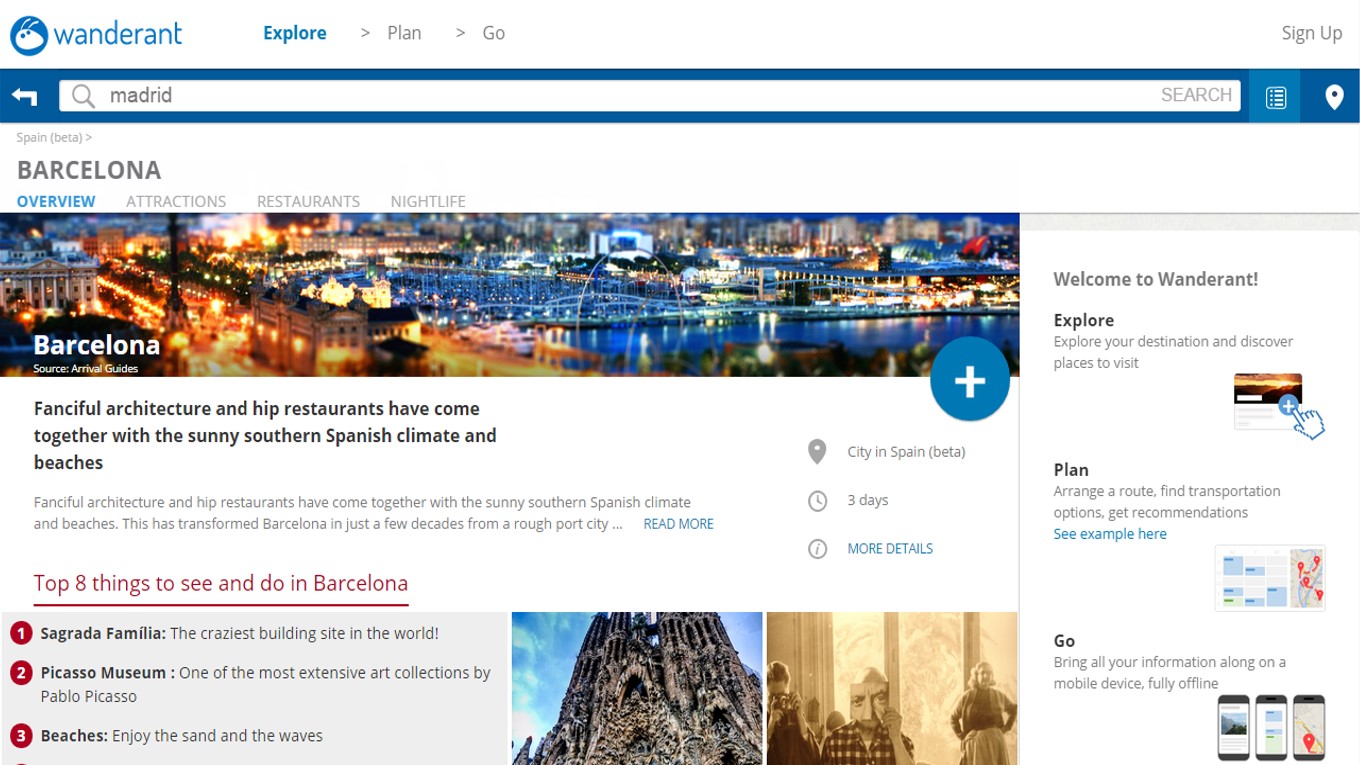Anticipating a vacation – and planning the trip – is often more gratifying than the travel itself. Studies show that the largest boost in happiness comes from the simple act of planning a vacation. Where will you go? How will you get there and where will you stay? What do you want to see and make sure not to miss? Let’s face it: researching and putting together a well-planned trip can take dozens of hours.
Or could, if you allow it to.
Enter Wanderant, which organizes all of those disjointed pieces of a trip to save users time and work. It ties together relevant information – attractions, maps, transportation, hotels, etc. – into one simple workflow. Whether you spend hours on spreadsheets or lose track of notes you wrote on napkins, trip planning is about to get much easier.
In other words, it’s the complete package. Literally.
CEO and Cofounder Itai Leibowitz tells us how it all works, for people who are going off to play.
Tell us about the product.
Wanderant is a travel planning tool for people who love a well-planned trip. It helps them discover and organize all the information related
to their trip in a single place, and access it offline on mobile when they travel (with offline maps and directions).
How is it different?
We make information actionable at every stage of the journey. Most travel-related sites stop at inspiration (e.g., Tripadvisor, blogs) or push for specific purchases (e.g., Expedia, Peek). In contrast, we help travelers discover information and act upon it: we tie together the fragmented pieces of planning, such as discovery, logistics (maps, transport options, prices), booking. The plan is automatically synced with offline maps and directions during travel to provide a seamless end-to-end experience.
What market are you attacking and how big is it?
We lovingly call our early adopters the über-planners. They constitute 20%-30% of travelers, spend over 40 hours researching across multiple websites and manually organizing their plans in spreadsheets, maps, and printouts. They enjoy planning, but it takes them too much time and work, and they are actively looking for solutions. We’ve conducted dozens of interviews with über-planners, and the product continuously evolves, based on their feedback.
What is the business model?
Wanderant is free to use. We make money when travelers book accommodation, activities or transportation. Our unique view of a traveler’s needs spans the entire trip – we can see you need a flight, two trains, hotels in three cities, and maybe a romantic dinner. This is more than any single portal can do, which lets us make more relevant suggestions with higher conversions.
What are the favorite hotspots for your users in NYC?
Not surprisingly, first comes Times Square, followed by the Statue of Liberty, Central Park and MoMA.
What are the milestones that you plan to achieve within six months?
Our priorities are building a kick-ass product and nurturing a growing community of dedicated users. We’re excited about a number of developments, including
- Free offline maps and directions worldwide for people to follow their plan
- Booking transportation at the click of a button
- Engaging overview of each place that helps travelers prioritize and plan more naturally
This will keep us on track to reach 15,000 unique monthly users by the summer.
If you could be put in touch with one investor in the New York community who would it be and why?
Sir Richard Branson so that Wally, our ant mascot, can plan a trip to Mars.
In the meantime, we’d be excited to talk to angels and investors who have experience in the travel space or have built consumer businesses, and love to travel.
Why did you launch in New York?
Both founders consider New York home and find its entrepreneurial energy contagious. If it were its own country, New York would be the fifth most visited in the world.
What’s your favorite local bar?
Esperanto in the East Village for their fun Brazilian life music and spicy margaritas (and great moqueca too!).





